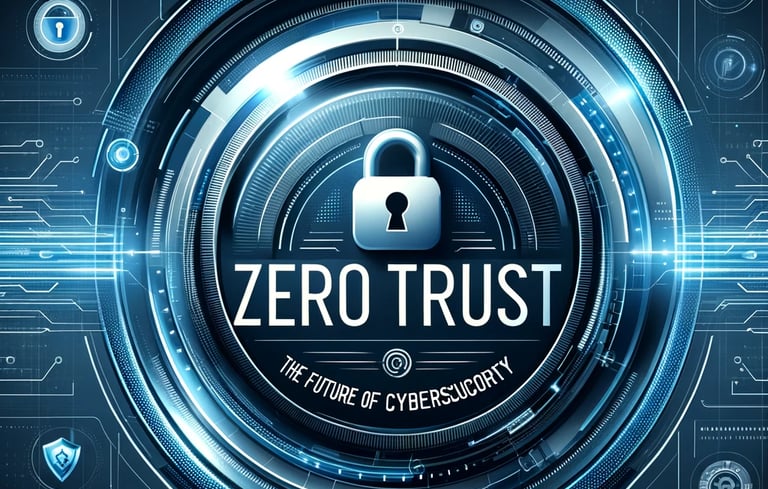Embracing the Future of Security: Building Security in an Untrusted World
Explore the transformative approach of Zero Trust security through an engaging blend of insights and visuals, highlighting its core principles, benefits, and implementation strategies for a more resilient cyber defense.
1/6/20242 min read
Introduction
Zero Trust is a cybersecurity framework based on the belief that no user or device, whether inside or outside the network, should be automatically trusted. This method requires ongoing confirmation of the authenticity of all users, devices, and network links before allowing access to data and services. Unlike conventional security models that concentrate on safeguarding the perimeter, Zero Trust recognizes that threats can arise from any location, underscoring the importance of internal network security alongside external defenses. Here, we explore the Zero Trust model, its fundamental principles, and its growing significance as a vital strategy for organizations globally.


What is Zero Trust?
Zero Trust isn't merely a piece of technology or software; it's a comprehensive strategy for network security that encompasses diverse policies, technologies, and controls. Its development stems from the recognition that trust can be exploited as a vulnerability. If a network's security relies solely on perimeter defense, attackers can freely move laterally once they breach the perimeter, gaining access to sensitive data. Zero Trust addresses this vulnerability by implementing security measures across the entire network, rather than just at its boundaries.
Principles of Zero Trust
The Zero Trust model is based on several core principles:
Explicit Verification: Every access request must be authenticated, authorized, and encrypted before granting access, regardless of its source or target.
Least Privilege Access: Users are granted only the access necessary for their tasks, minimizing the risk of attackers exploiting compromised credentials to access sensitive data.
Assume Breach: Zero Trust operates on the assumption that attackers may breach the network perimeter, focusing on limiting lateral movement and safeguarding internal resources.
Microsegmentation: The network is divided into small, secure zones to control access and movement, minimizing the potential impact of breaches.
Continuous Monitoring and Validation: Network traffic is regularly analyzed to identify and respond to threats promptly, ensuring that security measures remain effective and up-to-date.
Implementing Zero Trust
Integrating Zero Trust demands a methodical strategy incorporating technology, procedures, and human resources. Organizations should assess and categorize their data, outline transaction flows, and design a network divided into secure segments that adhere to the principle of minimal access. It's essential to continuously monitor and oversee access requests, while also implementing multi-factor authentication, encryption, and behavior analytics for enhanced security measures.
Why Zero Trust?
In an era where cyber threats are increasingly sophisticated and insiders pose as much of a risk as external attackers, Zero Trust offers several advantages:
Enhanced Security Posture: By assuming that threats can come from anywhere, Zero Trust strengthens an organization's defenses against a wide range of attacks.
Improved Compliance: Zero Trust helps organizations meet regulatory requirements by providing robust data protection and access controls.
Flexibility and Scalability: Zero Trust architectures can adapt to the changing IT landscape, protecting cloud-based assets and mobile workforces.
Conclusion
The transition to a zero-trust model represents a fundamental shift in how organizations approach cybersecurity. While it requires significant effort and investment, the payoff in terms of improved security is substantial. As cyber threats continue to evolve, adopting a zero-trust strategy is not just advisable; it's imperative.
